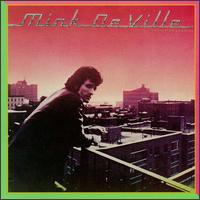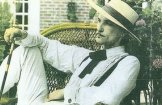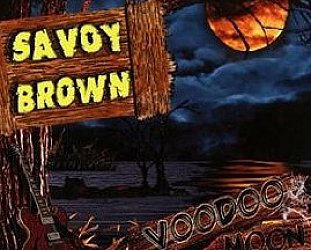Graham Reid | | 5 min read
Mink De Ville: Just Your Friends

The curious things about the life of Willy De Ville was not that he succumbed to pancreatic cancer in early August 2009, but that he had lived so long.
He was 58 when he died -- but from the time he appeared on the post-punk New Wave scene in New York in the early Eighties he seemed to be destined for a short but bright flight.
He was junkie, his first wife would pull a knife on rock journalists at any perceived slight, and with his high cheekbones and lupine features Willie was every inch the suave Hispanic street hustler.
In London at some time in the early Nineties I was talking with Ed Bicknell who had managed Dire Straits and was still looking after Mark Knopfler’s career.
By this time the Straits were over and Knopfler was doing movie soundtracks and, improbably, producing albums: he had recorded Miracle with Willy and although the album was considered a breakthrough, it hadn’t been the easiest of sessions.
Bicknell told me how Willy was so wasted that all they could do was write his lyrics out one line at a time for him to sing. Someone in the studio would point to him when he was needed to do the line and afterwards he’d crash again.
But Miracle, the first album under his own name, took Willy to new heights of acceptance when one song off it, Storybook Love, was used in the Rob Reiner hit movie The Princess Bride. The song was nominated for an Academy Award (it didn’t win) and Willy performed at the Grammys.
Oddly enough, the sentiments of that song were pretty much Willy’s forte: for all the tough attitude he was a romantic at heart and his early ballads on the first three Mink De Ville albums -- Cabretta in ‘77, Return to Magenta of ‘78 and Le Chat Bleu in ‘80 -- are outstanding: Guardian Angel, “A” Train Lady, Just Your Friends, I Broke That Promise, Just To Walk That Little Girl Home . . .
These were songs grounded in the legacy of the great Doc Pomus (a co-writer on Le Chat Bleu) and the Brill Building. They seemed to beamed straight from Spanish Harlem, Fifties r’n’b and soul, and a touch of Phil Spector.
Willy was the sum of many influences. 
Ironically, although he looked like he had come from the tough streets of Spanish Harlem as a rock’n’roll hustler, he was of Native American, Basque and Irish ancestry and had been born William Borsey Jnr in Connecticut.
But he reinvented himself with style and by the mid Seventies, after time in London and San Francisco looking unsuccessfully for like-minded musicians, he settled in New York. He formed the magnificently named Mink De Ville (sort of smooth, cool and exotic sounding) which became the house band at CBGBs just before the whole New Wave scene of Talking Heads, the Ramones and Blondie broke.
At the time the band was more rock’n’roll than Spanish soul but when they were signed they delivered the extraordinary Cabretta where Willy’s aching ballads sat sometimes uncomfortably alongside the more heads-down Fifties-framed rock’n’roll.
That was to be the pattern over those first three albums and although Spanish Stroll off the debut was a minor hit, Mink De Ville never broke through as they deserved to. Maybe it was the knife-wielding wife, maybe it was Willy’s dependency, maybe it was because everyone preferred hip Talking Heads and beautiful Blondie?
In truth, Willy was old wave at the time New Wave. For him the past was a beautiful place full of promise and great source material. Like Springsteen, Willy looked back to classic songwriters. Which is maybe why he appealed to rock writers more than the rock audience.
But Mink De Ville achieved critical acclaim and the respect of their peers, although there were diminishing returns: after that trilogy of intermittent greatness Willy seemed slightly adrift and went to Muscle Shoals for the Sportin’ Life album and London for Miracle. He finally settled in New Orleans where for many years he felt entirely at home.
He recorded in Los Angeles, enjoyed minor successes in Europe, and in this period his finest album was Loup Garou of ‘95 which was steeped in the spirit of New Orleans but also featured a duet with Brenda Lee.
Things were never easy for Willy however: he shifted from one major label to another and then onto smaller and smaller companies; he remained a heroin addict until 2000; his second wife committed suicide (he discovered her hanged); got in car accident and had to walk with a cane; got into his Native American heritage and shaved his hair into a Mohawk (he looked junkie-terrible); remarried and returned to New York . . .
And all the time he continued to record to greater and greater public indifference.
Loup Garou is arguably his best album of the solo years, but Return to Magenta gets the Essential Elsewhere nod for its classic balladry and hard-edged New York rock.
At the time it was criticised as being too similar to the debut, but distance allows you to appreciate the more mature song writing in the ballads (the string-soaked Guardian Angel, the lovely “A” Train Lady, the Spector-like Just Your Friends with clacking castanets) where you can hear Willy connect to the spirit of Ben E King and the Drifters/Arthur Alexander/the Ronettes.
And on the gritty guitar-driven up tempo songs he’s a Mean Streets rock’n’roll gunslinger not to be messed with. Steady Drivin’ Man hooks into Bo Diddley/Chuck Berry boasting.
With Dr John on piano (check the funky Easy Slider) there were early hints that New Orleans might be where he was headed. Doc Pomus wrote the liner notes and the gorgeous I Broke That Promise is infused with the spirit of his Save The Last Dance For Me.
Produced by Jack Nitzsche, one of Phil Spector’s proteges, this has the sound and feel of an earlier time than the New Wave era in which it appeared.
In truth, the debut album Cabretta is just as essential, and so is the follow-up Le Chat Bleu (they were conveniently packaged as The Originals in the early Nineties).
You barely slip a shiv between them if you are looking for the early genius of the late Willy De Ville.
These Essential Elsewhere pages deliberately point to albums which you might not have thought of, or have even heard . . .
But they might just open a door into a new kind of music, or an artist you didn't know of. Or someone you may have thought was just plain boring.
But here is the way into a new/interesting/different music . . .
Jump in.
The deep end won't be out of your depth . . .







Relic - Aug 28, 2009
Willys demise was refered to on Backstreets.com and Little Stevens underground garage, both guardians of a certain type of ‘coulda been a contender’ artist, and I wondered whether he might shuffle into view on Elsewhere. The seductive Mink De Ville moniker incorporates the Cadillac Coupe DeVille vehicle name and the first two albums were certainly popular on release in the Auckland US car scene, with obvious songs like Spanish Stroll and Cadillac walk. Interest dropped off soon enough, but for my money Le Chat Bleu takes it by a quiff from the first two. It has an almost European sound, where it was first released if I recall NME correctly, and it was initially released only as an import in the US. How often has crap marketing done a musician in? Slow Drain stating the obvious too, to be fair. This has reminded me to seek out some of the later recordings. The quality of writing, playing and genuine influences enables much of this to sound great today.
SaveGarth Cartwright - Sep 1, 2009
Nice tribute if limited by the writer's knowledge of Willy's output over recent decades. Yes, all 3 of the Capitol MDV albums are great - Le Chat Bleu being the best with its closing track That World Outside arguably being the greatest song Willy ever wrote and one of the most beautiful of the last 3 decades. Magnificent vocal on it too - Nitzsche would describe him as the greatest vocalist he ever worked with. Co-written with Doc Pomus, lyricist for The Drifters, Elvis etc. Willy was old school but never retro. Didn't Hello Sailor used to do a few Willy songs in concert? He definitely made an initial impact on NZ. Gordon Campbell wrote him up in the Listener and Greg Fleming and I used to play his albums over and over as teens.
SaveThe 80s were definitely Willy's nadir with both Atlantic albums, the awful Sportin' Life (willy produced it and seemed to be desperate to sound like Phil Collins or other muck), and Miracle all worth skipping. In New Orleans he reconnected with his mojo and like-minded musicians and made the great NO tribute Victory Mixture in 1990. Willy had always been more popular across the European continent than elsewhere and Victory Mixture was a big hit, going gold in France. He toured with the New Orleans All Stars (Dr John, Eddie Bo, Johnny Adams, mardi gras Indians) - I caught them in London and they were great. He then followed with the great Backstreets Of Desire (1992) which had his magnificent mariachi reworking of Hey Joe - topping both French and Spanish pop charts. If that's "minor European success" I'll have some of it. Loop Guru is an odd one for the writer to nominate as his "best" as to me it's the weakest of his comeback albums, looking back to the studio trickery that marred his 8os work. It's OK but not great. Horse Of A Different Color - produced by the late, great Jim Dickinson and featuring his sons and the Muscle Shoals crew - is Willy showing his love for old soul and blues (covering Andre Williams, Fred McDowell, The Searchers and the song Dickinson co-wrote with Cooder and Hiatt Across The Borderline). Gorgeous album.
European success had allowed Willy to buy a ranch in Mississippi and breed Arabic stallions but the IRS came calling over unpaid taxes so he lost that and shifted to New Mexico. It was here his second wife Lisa committed suicide and he was in an awful car crash that shattered his left leg. For such a slick dresser who was so meticulous about his music he lived a life of chaos.
Several years gap from recording ended when he issued a double CD Acoustic Trio Live in Sweden. This finds him doing standards like Let It Be and Dylan's Billy The Kid and singing his ass off. A pleasure to listen to. 2005 found him issuing Crow Jane Alley - a superb album of originals that includes a tribute to Nitzsche and one to Muddy Waters. And lots of love songs to wife 3 Nina. He covers Bryan Ferry's Slave To Love and yeah he really means it! I travelled to Paris and interviewed him and saw him in concert, fabulous band, very fluid, great players, lots of accordion and slide guitar. That tour's documented on the Live In The Lowlands DVD on Eagle (as are 2 other live DVDs - Mink at Montreux in early 80s and Willy also there early 90s). What was he like to talk to? A trip. Very tall guy dressed like a 19th C New Orleans plantation owner with long black hair and seemingly not a line or mark on his face. No, I very much doubt any plastic surgery, Willy was just a strange mix of things and that's why he looked and sounded unique. We smoked cigarettes and talked of music and musicians - he was so passionate about music.
2008's album Pistola is maybe his greatest solo album. Really tough sounding with a big shout out to getting clean Been There Done That and an elegy to New Orleans The Band Played On. Track for track it's superb with the final tune The Mountains Of Manhattan finding him dipping into his Native roots with some lovely flute. If he had to go at least he did it on a career high and knowing he was loved. He always wanted to get to Australia cos his sister lived there and Raven had reissued the first 2 Capitol albums and Miracle - I don't think he did so that removed the opportunity for Kiwis to catch the man whom I consider the most talented singer-songwriter of the punk-new wave era and one of the most enduring talents of recent times. Thanks for the tunes, Willy.
Relic - Sep 3, 2009
Lovely post Garth,
SaveIlluminates Elsewhere’s need to be, people still give a shit. Graham covers a lot of territory, much of it badlands, so he can’t be expected to know everything. I thought he was slightly off re one of my faves ‘Southside Johnny & the Asbury Jukes’ via an Aussie compilation but...he made the effort, and if even one more person gives these marvellous sounds a spin it is worth it. I talked to an Alaskan gal, tourist, last year who used to go to Southsides regular New Years Eve show in NY City as a 70s teen and was way impressed that someone here even knew about the band. Thanks for the guide to the later Willy material.
Pier - Jun 16, 2010
Wow...
SaveMan; I didn't know that he died.
What a drag,still; Not too suprising. As you point out yourself: He lived a fast and tough junkie-life, though he did have a clean period around The work with Mark Knopfler and "Miracle", so i do not know when he relapsed into addiction; but being a former addict myself; i know how hard it is.
Saw him at The Roskilde Festival in 1995.
An oustanding early saturday afternoon Concert. So cool in the summer heat that was about 30-C.(ca 90-F) average in Scandinavia that summer. So elegant, and in conrol at stage. So many beautiful songs. He'll be deeply missed.
post a comment